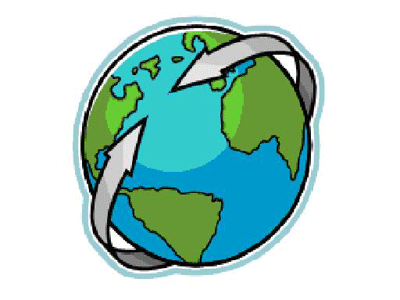 One of the newest and fastest growing investment products today is exchange-traded funds, or ETFs. They are easy to use, trade like stocks on major exchanges throughout the day, and usually contain a wide variety of assets, including individual stocks, bonds, and commodities. Self-directed investors love the broad diversification offered by ETFs because they no longer have to research a whole host of company stocks to create a diversified portfolio. Instead, people can purchase a portion of hundreds of assets with just one click. Now the concept of exchange-traded funds is going global. Foreign economies are growing faster than the United States economy, and with technological advancements and globalization, foreign markets are drawing investors from all over the world. What makes these international exchange traded funds so attractive to outside investors, and should you get in on the trend? Many exchange-traded funds focus on global (developed or developing) economies or particular regions, such as Europe or Pacific/Asia ex Japan. Some ETFs even pinpoint countries or sectors within a country, like the Global X China Energy Fund (ticker: CHIE). They also differentiate by asset classes. For example, the Market Vectors Russia Small-Cap ETF (ticker: RSXJ) is comprised of small-capitalization companies listed primarily in Russia, which provides exposure to domestic growth and mitigates exposure to global cycles. There are over 1400 exchange-traded funds and hundreds of foreign ETFs so the creators have further classified them: broad international equity funds, regional funds, country-specific equity funds, international sector funds, size-specific international equity funds, and so on! Is your head spinning yet? With so many choices out there, how do you know what to buy? First, determine your investing strategy. Then, ask yourself, “Should I buy a domestic ETF or look into funds that invest in foreign-based securities?” Your strategy plays a vital role in the decision whether or not to invest internationally. How much risk are you willing to take? International ETFs carry more risk than domestic funds, especially if the fund focuses on unstable emerging markets. The amount of risk you are willing to take can be affected by your age (young people can generally assume more risky investments than retirement-age folks), your personality (do you thrive on taking greater risk to achieve greater reward?), and your level of confidence in the investment. Also, maintenance fees and other costs may influence your purchasing decision. Small, industry-specific international funds have higher net expense ratios than similar funds in the United States because there are higher costs to invest abroad. If you implement a short-term holding strategy, the trading costs can add up quickly and diminish any profits you would have incurred otherwise. Regardless of your investing strategy, portfolio diversification is fundamental. ETFs may be diversified through different countries, different sectors, or different asset classes (large, growth, blend, etc.). Emerging markets are much more volatile than the markets of developed countries so reduce your exposure by investing in more than one country or region. International funds that invest in a single country inherently have more risk than funds that hold securities in many countries. For instance, if I only own the EGS INDXX Brazil Infrastructure ETF (ticker: BRXX), and the Brazilian economy experiences a crisis, the effect will likely be catastrophic for my portfolio as well. As Brazilian infrastructure loses steam, the overall performance of the ETF will also decline. If you are looking to truly diversify with an international exchange traded fund, it is important to choose a fund that is not highly correlated with the domestic markets. For example, large MSCI Emerging Markets funds are consistently mentioned among international ETFs, but the EAFE indices contain assets concentrated in Japan and the United Kingdom. Although these are developed areas, the corresponding ETFs may suffer from a lack of diversification since the markets in these regions tend to perform similarly to the United States equity markets. Country-specific ETFs may be appealing to investors who believe they can identify markets with excellent potential for GDP growth and outperform other funds. However, ETFs with holdings from only one country do not necessarily capture the underlying economy. Switzerland is a prime example; many companies headquartered in Switzerland and primarily listed there obtain a majority of their revenue abroad. Nestle, a Swiss company, derives more than a quarter of its revenue from the United States. Although investors think they are invested in a Swiss ETF that holds a large share of Nestle, they are less exposed to Switzerland and more exposed to the United States through that ETF. Noteworthy advice: conduct your own research before buying an ETF, domestic or international. Do not simply go with the largest fund or the one with the highest return this year. Look at the bigger picture; in addition to performance, evaluate the fund’s history, its underlying index, volume, risk, expense ratio, asset category, holdings, and total net assets. Which securities and how many assets does the fund hold? Although an industrial ETF may look like a good buy, it may still lack diversification by country or region. By analyzing several aspects of an exchange-traded fund, you will see that many factors determine its success. If you are looking to buy an international exchange traded fund, stay on top of global news and the future outlook for companies overseas. This can be a good indication of how your ETF will perform in the coming weeks or months. Also, keep an eye on your positions once you have bought an international ETF, but do not stress or become discouraged if it takes a sudden downturn. With a buy-and-hold strategy, the chance of your ETF losing a significant sum of money in the long run is unlikely. If it does not recover within a reasonable timeframe, consider readjusting your exposure to certain funds each year. Most importantly, take your time to find exchange-traded funds that match your investment strategy, because aligning your goals will pay off in the end. comments powered by Disqus |

|
|
|
|







